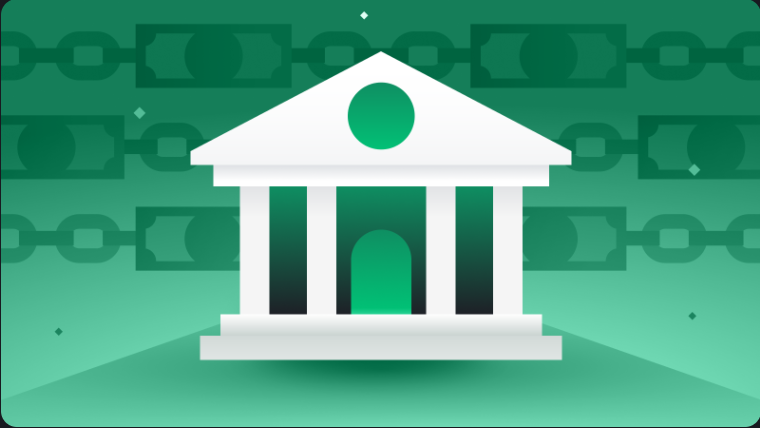
What is a Central Bank Digital Currency (CBDC)?
A Central Bank Digital Currency (CBDC) is a digital form of fiat money. As such, it is established as money by government regulation.
The design approach of a CBDC will likely vary a lot based on the issuing country or region. Some implementations will likely be based on blockchain or some other type of Distributed Ledger Technology (DLT), whereas others may simply be a centralized database. Blockchain-based CBDCs use a token to represent the digital form of fiat money.
While we could say that CBDCs are somewhat inspired by cryptocurrencies like Bitcoin, there are big differences. A CBDC is issued by a state and is declared by the government to be legal tender.
Cryptocurrencies like Bitcoin are borderless and not issued by any country or central entity. This isn’t to say that you couldn’t use a CBDC for cross-border payments, but Bitcoin doesn’t even have the notion of national borders.
Many central banks are considering or already actively experimenting with proof-of-concept CBDCs.
Since 2014, China has been working on a project called DC/EP (Digital Currency/Electronic Payment). Active trials of the digital yuan have already been rolled out in multiple cities. The European Central Bank (ECB) published a report in October 2020 introducing a digital euro and assessing the merits of such a digital currency.
Understanding Central Bank Digital Currencies (CBDCs)
From a technical perspective, a CBDC is essentially a database that is run and controlled by the government (or possibly approved private sector entities). Because of this, a CBDC is a permissioned database, as only approved participants can transact on the network.
As such, the central entity that controls the database can also prevent transactions from going through, reverse transactions, “freeze” funds, or blacklist addresses.
Many CBDCs will likely run on their own blockchain. However, some may be issued on public blockchains. In this way, they place a permissioned asset on top of a permissionless base layer. This way, they can get the best of both worlds: the permissioned layer can provide the control that central banks require, while the permissionless layer can provide the strongest security guarantees.
But this may not be the norm. No public blockchain currently has the technical means or has stood the test of time to prove it can safely handle such a mission-critical task.
Beyond this, outlining how a CBDC would work isn’t straightforward, as each country or region has a different approach. They may tailor it to their specific needs.
Benefits of Central Bank Digital Currencies (CBDCs)
You may have heard the phrase “banking the unbanked” in the cryptocurrency space before. While the idea certainly has some appeal, CBDCs may be better suited to achieve this goal than decentralized cryptocurrencies like Bitcoin. Any legal citizen could easily have access to a low-cost bank account, increasing financial inclusion.
Another benefit is the technological advancement that comes with overhauling the monetary system. While a large portion of fiat money is essentially a number in a database, most of the infrastructure is quite old. Sending an email on a Sunday afternoon takes seconds – and that’s something we take for granted. However, transferring money can take days due to the current convoluted financial system.
With the economic action taken in response to the COVID-19 pandemic, we’ve seen central banks needing to act faster than ever. A CBDC would allow central banks and financial institutions to implement changes to monetary policy in a more direct way than ever before. This could potentially revolutionize how central banks operate.
CBDCs also make it easier for governments and central banks to track illicit activity.
CBDCs and Stablecoins
So, these properties we’ve outlined sound a lot like stablecoins, right? Functionally, they are somewhat similar – they both represent fiat money in the form of a digital token. However, by nature, they are fundamentally different.
Stablecoins are typically issued by private entities and essentially represent fiat money or other assets. Their value can be redeemed, but they are not legal tender. A CBDC, on the other hand, is issued by the government as legal tender.
CBDCs and Cryptocurrencies
As we mentioned earlier, CBDCs are different from cryptocurrencies. A CBDC is issued by a central bank and is government-issued legal tender. You can think of a CBDC as a banknote – it’s a unit of account, a medium of exchange, and a store of value.
A real cryptocurrency (like Bitcoin) is quite different. It’s not issued by a government, doesn’t have “national borders,” and is permissionless, trustless, and censorship-resistant. What’s more, the network it lives on isn’t controlled by a central entity. No one can blacklist your Bitcoin address or prevent you from sending transactions to other Bitcoin addresses.
Which one is better? It depends on the use case. Sometimes, it’s useful to have an entity that can reverse transactions or blacklist addresses. Other times, it’s more useful to leverage the benefits that decentralized networks like Bitcoin bring to the world.
Closing Thoughts
In short, we could say that a central bank digital currency is a digital form of fiat money. Many implementations of CBDCs will likely use blockchain technology and provide a smoother digital payment method for any individual.
















